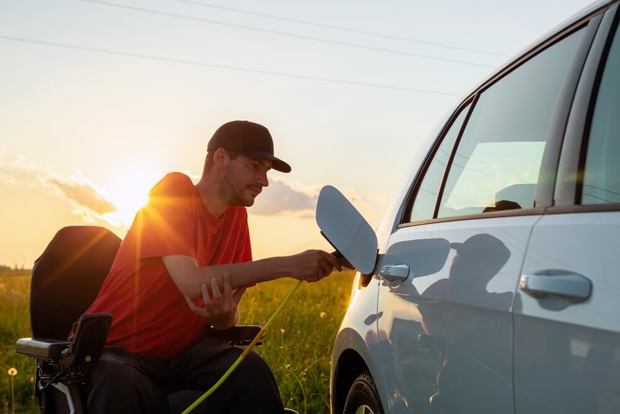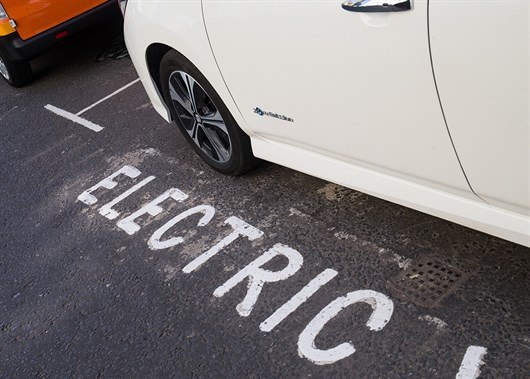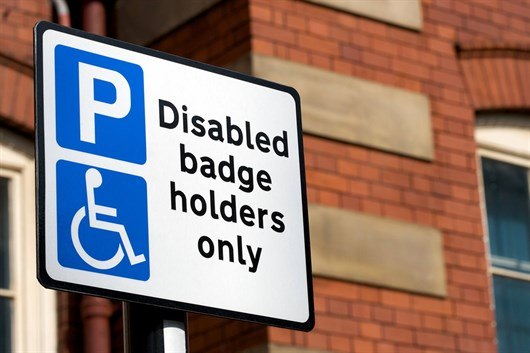New guidance launched to help make EV chargers more accessible

- BSI has published a standard setting out best practice on designing accessible public EV charge points
- By 2035 up to half of disabled EV drivers expected to be reliant on public charging points
- Risk that disabled people will be 'left behind' in transition to EVs if public charging isn't improved
New guidelines have been published for electric vehicle (EV) charge point providers to help improve the public charging experience for disabled users.
Disabled people can face a range of difficulties when attempting to use public EV charging points, including charging units being at an unsuitable height for wheelchair users, charging cables being too heavy to lift, connectors that require a high level of force to use, as well as issues with the size of the parking bay or the height of the kerb.
The new standard, PAS 1899:2022, which has been published by the national standards body BSI aims to address these by setting out best practice on designing accessible public EV charge points.
It has been co-funded by charity Motability and the Office for Zero Emission Vehicle (OZEV) after Motability’s research highlighted the challenges disabled EV drivers face and identified that by 2035 there will be 2.7 million disabled drivers in the UK, with up to half – 1.35 million – reliant on public EV charging points.

Transport Minister Lucy Frazer said: “We want everyone to be able to make the switch to electric vehicles as we look to make transport cleaner and meet our climate targets. That means all drivers need to be able to easily find public charge points which are at an accessible height and have adequate space for disabled users.
“This new Government-backed standard will help the industry to create and install charge points that everyone can use easily, making the experience better and fairer for disabled people across the UK.”
The standard includes supplementary guidance on lighting and the provision of security cameras - both of which are measures being called for in a new campaign to improve safety at public charging points.
Alongside the new PAS 1899:2022 standard, charity Designability, in partnership with Motability, have produced freely available design guidance for providers of public electric vehicle (EV) charge point infrastructure, to ensure accessibility for all users.

Although there is no legal requirement for charge point providers to follow the standard, Motability’s chief executive officer Barry Le Grys said that the charity was “keen to explore ways to ensure compliance with the new standard”.
He warned that if public EV charging is not made more accessible “there is a real risk that disabled people will be left behind in the UK’s transition to electric vehicles”.
Graham Footer, chief executive of Disabled Motoring UK (DMUK), a charity for disabled drivers, passengers and Blue Badge holders, voiced similar concerns to HonestJohn.co.uk earlier this year.
He called for wireless electric vehicle charging to help overcome the accessibility issues disabled users face.
How many public EV charging points are there in the UK?
There are 34,860 electric vehicle charging points across the UK, across 20,888 charging locations, according to the latest figures from ZapMap.
Is PAS 1899:2022 mandatory?
No, PAS 1899:2022: Electric vehicles – Accessible charging – Specification is not mandatory. It sets out best practice guidance on designing accessible public electric vehicle charge points.
How was PAS 1899:2022 created?
PAS 1899:2022: Electric vehicles – Accessible charging – Specification was developed by the national standards body BSI and co-sponsored by charity Motability and the Office for Zero Emission Vehicles (OZEV).
Disabled people were involved at every stage of the development of the standard. The steering group that informed the standard included representation from disabled people, disabled people’s organisations, disability charities, industry bodies, transport agencies, representatives from central government and from devolved administrations, and chargepoint providers.
Can I install an EV charger in my garage?

Are there specific tyres for EVs and hybrids?


